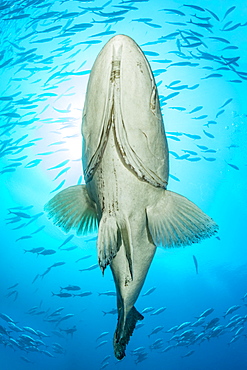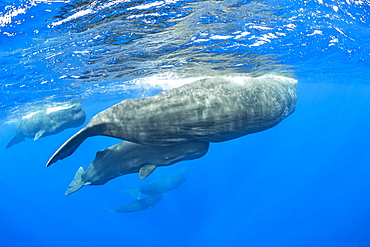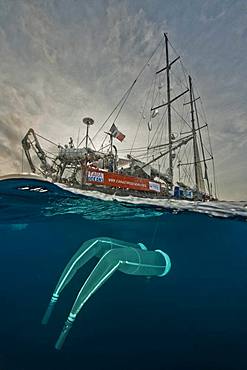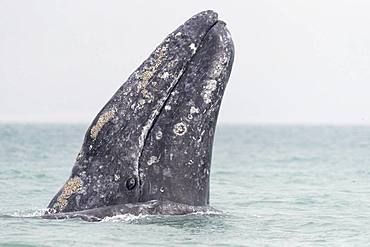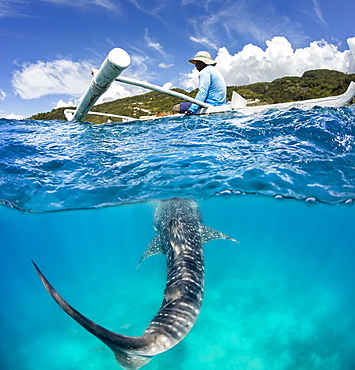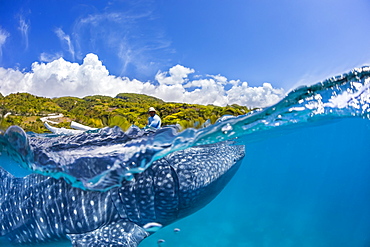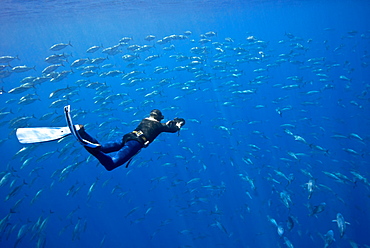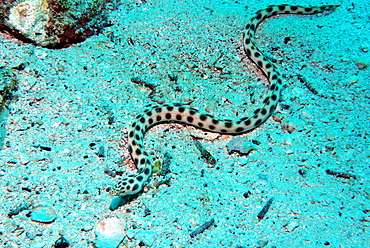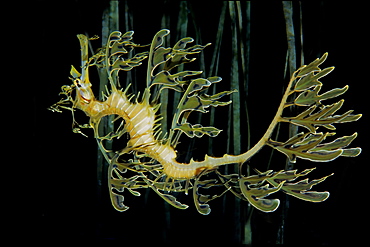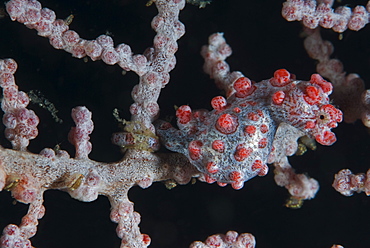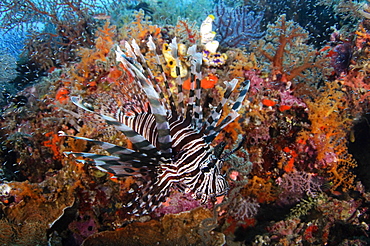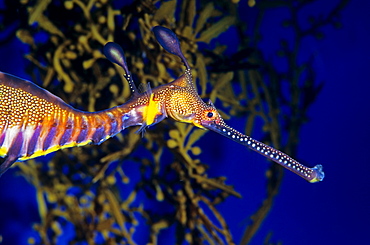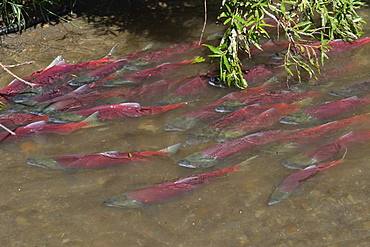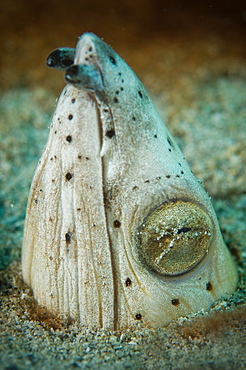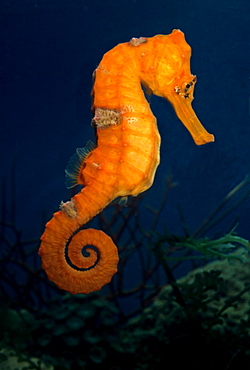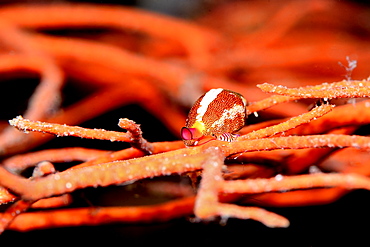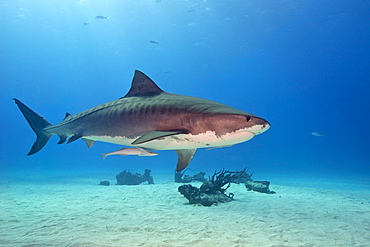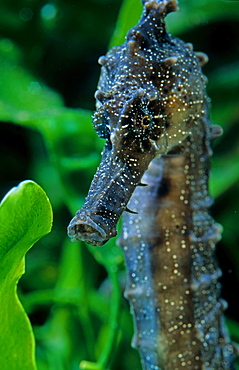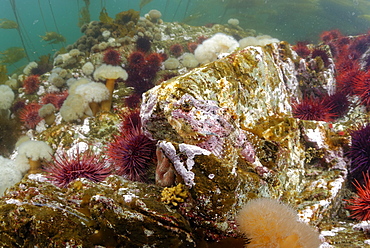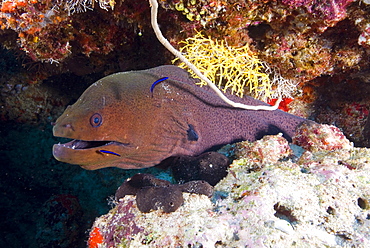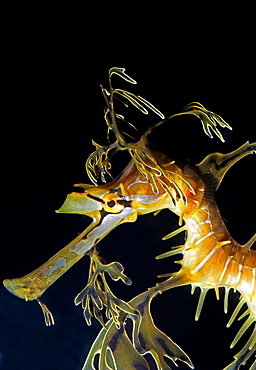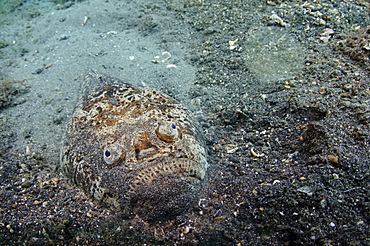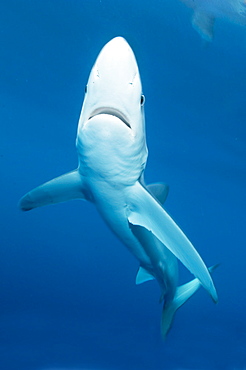Recent searches
Loading...
860-287967 - Shoal of Big-eye jacks (Caranx sexfasciatus), Cabo Pulmo Marine National Park, Baja California Sur, Mexico
860-287969 - Scuba diver swimming with a big shoal of Big-eye jacks (Caranx sexfasciatus), Cabo Pulmo Marine National Park, Baja California Sur, Mexico
860-287981 - Big Gulf grouper (Mycteroperca jordani), seen from below, Cabo Pulmo Marine National Park, Baja California Sur, Mexico
860-287970 - Shoal of colorful yellow fish Panamic porkfish (Anisotremus taeniatus), Cabo Pulmo Marine National Park, Baja California Sur, Mexico
860-287976 - Shoal of Graybar Grunt (Haemulon sexfasciatum), Cabo Pulmo Marine National Park, Baja California Sur, Mexico
860-287980 - Big Gulf grouper (Mycteroperca jordani), Cabo Pulmo Marine National Park, Baja California Sur, Mexico
860-287917 - Sperm whale mother and calf, (Physeter macrocephalus), Vulnerable (IUCN), The sperm whale is the largest of the toothed whales. Sperm whales are known to dive as deep as 1,000 meters in search of squid to eat. Image has been shot in Dominica, Caribbean Sea, Atlantic Ocean. Photo taken under permit n°RP 16-02/32 FIS-5.
860-287905 - Pod of sperm whale, (Physeter macrocephalus), Vulnerable (IUCN), The sperm whale is the largest of the toothed whales. Sperm whales are known to dive as deep as 1,000 meters in search of squid to eat. Image has been shot in Dominica, Caribbean Sea, Atlantic Ocean. Photo taken under permit n°RP 16-02/32 FIS-5.
860-287906 - Pod of Sleeping sperm whale (Physeter macrocephalus) Researchers first saw this unusual sleep behavior in sperm whales in 2008. The scientists in that study found that sperm whales dozed in this upright drifting posture for about 10 to 15 minutes at a time, Vulnerable (IUCN). The sperm whale is the largest of the toothed whales. Sperm whales are known to dive as deep as 1,000 meters in search of squid to eat. Dominica, Caribbean Sea, Atlantic Ocean. Photo taken under permit n°RP 16-02/32 FIS-5.
860-287903 - Pod of sperm whale socializing, (Physeter macrocephalus), Vulnerable (IUCN), The sperm whale is the largest of the toothed whales. Sperm whales are known to dive as deep as 1,000 meters in search of squid to eat. Image has been shot in Dominica, Caribbean Sea, Atlantic Ocean. Photo taken under permit n°RP 16-02/32 FIS-5.
860-287901 - Couple of sperm whale, (Physeter macrocephalus), Vulnerable (IUCN), The sperm whale is the largest of the toothed whales. Sperm whales are known to dive as deep as 1,000 meters in search of squid to eat. Image has been shot in Dominica, Caribbean Sea, Atlantic Ocean. Photo taken under permit n°RP 16-02/32 FIS-5.
860-287897 - Pod of sperm whale with mother and calf, (Physeter macrocephalus), Vulnerable (IUCN), The sperm whale is the largest of the toothed whales. Sperm whales are known to dive as deep as 1,000 meters in search of squid to eat. Image has been shot in Dominica, Caribbean Sea, Atlantic Ocean. Photo taken under permit n°RP 16-02/32 FIS-5.
860-287912 - Snorkeler photographing a pod of Sleeping sperm whale (Physeter macrocephalus) Researchers first saw this unusual sleep behavior in sperm whales in 2008. The scientists in that study found that sperm whales dozed in this upright drifting posture for about 10 to 15 minutes at a time, Vulnerable (IUCN). The sperm whale is the largest of the toothed whales. Sperm whales are known to dive as deep as 1,000 meters in search of squid to eat. Dominica, Caribbean Sea, Atlantic Ocean. Photo taken under permit n°RP 16-02/32 FIS-5.
860-287564 - Imperial Shrimp (Periclimenes imperator) on a blue sea cucumber (Actinopyga caerulea) 76 meters deep, Mayotte
860-287611 - Gray whale (Eschrichtius robustus) Baja California. Mexico.
860-287459 - Tara Oceans Expeditions - May 2011. diving Marine Iguana (Amblyrhynchus cristatus); Isabela Island; Galapagos, Ecuador; The Marine Iguana appears slow and clumsy on land, but this particular species of lizard is the only sea-going lizard in the world. However, it has to return the the land to breed.
860-287518 - Oyster of Bouzigues in the hand of an oyster farmer, Etang de Thau, France
860-287516 - Bag of oysters from Bouzigues, Etang de Thau, France
860-287517 - Man using a knife to disconnect an oyster Bouzigues, Etang de Thau, France
860-287512 - Establishment of oyster spat at an oyster farmer Etang de Thau, France
860-287562 - A small Red-Spotted Guard Crab (Trapezia tigrina) keeper of the corals of the bateau pass, Mayotte
860-287515 - Oysterman carrying a bag of oysters, Etang de Thau, France
860-287450 - Tara Oceans Expeditions - May 2011. Tara with deployed plancton nets. On "station", the boat is drifting without engine or sails. Tara Oceans, a unique expedition: Tara Oceans is the very first attempt to make a global study of marine plankton, a form of sea life that includes organisms as small as viruses and bacterias, and as big as medusas. Our goal is to better understand planktonic ecosystems by exploring the countless species, learning about interactions among them and with their environment. Marine plankton is the only ecosystem that is almost continuous over the surface of the Earth. Studying plankton is like taking the pulse of our planet. Recently, scientists have discovered the great importance of plankton for the climate: populations of plankton are affected very rapidly by variations in climate. But in turn they can influence the climate by modifying the absorption of carbon. In a context of rapid physico-chemical changes, for example the acidification observed today in the world's oceans, it is urgent to understand and predict the evolution of these particular ecosystems. Finally, plankton is an astonishing way of going back in time ? a prime source of fossils. Over the eons, plankton has created several hundred meters of sediment on the ocean floors. This allows us to go back in time, to the first oceans on Earth, and better understand the history of our biosphere. More than 12 fields of research are involved in the project, which will bring together an international team of oceanographers, ecologists, biologists, geneticists, and physicists from prestigious laboratories headed by Eric Karsenti of the European Molecular Biology Laboratory. Galapagos
860-287539 - Dead fan mussel and diver, Mediterranean Sea. Massive mortality of Noble Pen Shell (Pinna nobilis) infected with the parasite Haplosporidium. Porticcio. Corsica. Mediterranean.
860-287565 - Couple of Imperial Shrimp (Periclimenes imperator) on a blue sea cucumber (Actinopyga caerulea) 76 meters deep, Mayotte
860-287513 - Oyster spat at an oyster farmer, Etang de Thau, France
860-287514 - Oyster spat at an oyster farmer, Etang de Thau, France
860-287602 - Santa Cruz marine iguana (Amblyrhynchus cristatus hassi)
860-287249 - Detail of a cauliflower jellyfish, Boueni Pass, Mayotte
860-287412 - Green turtle (Chelonia mydas) in long exposure. A green turtle swimming on the platier of the beach of N'gouja, in the south of the island of Mayotte.
860-287241 - Red-Spotted Guard Crab (Trapezia tigrina) female with eggs, sheltered in a branchy coral, Mayotte
860-287239 - Green turtle (Chelonia mydas) swimming in the lagoon, Mayotte
860-287090 - Gray Whale (Eschrichtius robustus), tail with trademarks that are distinctive signs of each whale, Magdalena Bay (Madelaine Bay), Puerto San Carlos, Baja California Sur, Mexico
860-287098 - Gray Whale (Eschrichtius robustus), adult, spyhopping, Ojo de Liebre Lagoon (formerly known as Scammon's Lagoon), Guerrero Negro, Baja California Sur, Mexico
860-287096 - Gray Whale (Eschrichtius robustus), adult, mouth open behind the boat, Ojo de Liebre Lagoon (formerly known as Scammon's Lagoon), Guerrero Negro, Baja California Sur, Mexico
860-287097 - Gray Whale (Eschrichtius robustus), adult, breaching, Ojo de Liebre Lagoon (formerly known as Scammon's Lagoon), Guerrero Negro, Baja California Sur, Mexico
860-287095 - Gray Whale (Eschrichtius robustus), adult, mouth open behind the boat, Ojo de Liebre Lagoon (formerly known as Scammon's Lagoon), Guerrero Negro, Baja California Sur, Mexico
860-287043 - Bear paw Clam (Hippopus hippopus) on detrital background. Rare in some areas of the lagoon due to overfishing. New Caledonia.
860-287036 - Green turtle (Chelonia mydas) feeding on algae. South lagoon. New Caledonia.
860-287037 - Green turtle (Chelonia mydas) swimming in the lagoon. South lagoon. New Caledonia.
1116-43189 - Fluked Tail Of Humpback Whale (Megaptera Novaeangliae) Rises Out Of The Water Just Before Whale Takes Deep Dive In Frederick Sound, Alaska, United States Of America
1116-41974 - The lion's mane jellyfish (cyanea capillata) is the largest known species of jellyfish in the pacific ocean on coastal british columbia, British columbia canada
1116-39726 - The Bubble Coral Shrimp (Vir philippinensis) is found only on this species of coral, Pleurogyra sinuosa. The brown oval objects are actually Acoel Flatworms (Waminoa sp) that feed on nutrients trapped in mucus covering the coral, Philippines
1116-39714 - These two parasitic mollusks, Thyca crystallina, are growing on the host starfish, Linckia laevigata. This parasitic shell only attaches to this species of starfish, into which it burrows and sucks up nutrients, Philippines
1116-39963 - Tourists above on a canoe and a Whale Shark (Rhiniodon typus) below with it's mouth open. This is the world's largest species of fish, Oslob, Philippines
1116-39967 - A commercial whale shark encounter with a feeder above on a canoe and a Whale Shark (Rhiniodon typus) below. This is the world's largest species of fish, Oslob, Philippines
1116-39964 - A commercial whale shark encounter with a feeder above on a canoe and a Whale Shark (Rhiniodon typus) below. This is the world's largest species of fish, Oslob, Philippines
1116-39725 - Mouth detail of a colourful and healthy Mushroom coral, Fungia fungites, that is growing on a tropical coral reef in the Philippines. Mushroom coral is unique in the coral world, in that it does not attach itself to the bottom, Philippines
1116-39730 - Colourful coral reef and schooling fish, Hawaii, United States of America
1116-39719 - A Slender Spongegoby (Phyllogobius platycephalops) and two different species of crabs. Attached to the goby are several parasites with egg cases, that will likely prove fatal over time. Many species live on the convuluted surface of this sponge, Philippin
1116-39966 - A commercial whale shark encounter with a feeder above on a canoe and a Whale Shark (Rhiniodon typus) below. This is the world's largest species of fish, Oslob, Philippines
1116-39938 - Mouth detail of a colorful and healthy mushroom coral (Fungia fungites) that is growing on a tropical coral reef. Mushroom coral is unique in the coral world, in that it does not attach itself to the bottom, Philippines
1179-295 - Stingray swim in the bay of Stingray City an authentic sanctuary for marine species, Antigua, Leeward Islands, West Indies, Caribbean, Central America
860-282371 - Diver and school of young bluefin tuna, Azores
860-285746 - Shore rockling in the reef, Mediterranean Sea
860-286231 - Plumose Anemone, Pacific Ocean Alaska USA
860-284235 - Tiger snake eel on bottom, Galapagos Islands
860-286239 - Plumose Anemones and Urchins, Pacific Ocean Alaska
860-283967 - White-banded Cleaner Shrimp on Grouper, New Caledonia
860-282721 - Coral hermit crab and Coral polyps, Haapai Tonga
860-285221 - Humpback whale feeding on the surface, Sea of ??Cortez
860-286267 - Portrait of Red Irish Lord , Pacific Ocean Alaska
860-286228 - Painted Anemone tentacles, Pacific Ocean Alaska USA
860-283788 - Bigfin reef Squid swimming under surface, Fiji
860-283814 - Clown nudibranch mating, Poor knights Island New Zealand
860-283151 - Pygmy Seahorse- Lembeh Strait Indonesia
860-282505 - Lionfish and Soft Corals, Raja Ampat Indonesia
860-282503 - Porcelain Crab on Soft Coral, Raja Ampat Indonesia
860-283143 - Portrait of Common sea dragon, Aquarium Singapore
860-284722 - Sockeye Salmons near the bank, Kuril Lake Kamchatka Russia
860-286276 - Opalescent Nudibranch on Sea Star, Alaska Pacific Ocean
860-285577 - White Simnia on Sea Fan, Mediterranean Spain
860-282952 - Tiger shark swimming above a sandy bottom, Bahamas
860-285255 - California Sea lions in the shallows, Gulf of California
860-286271 - Brown Irish Lord on reef, Pacific Ocean Alaska
860-286252 - Blotched snailfish on reef, Gambier bay Alaska
860-285250 - Mobula rays leaping, Gulf of California
860-286259 - Giant brooding anemone on reef, Alaska Pacific Ocean
860-283801 - Lions mane jellyfish, Poor knights Island New Zealand
860-285260 - Sailfish below the surface, Gulf of California
860-286288 - Roughpatch shrimp on reef, Alaska Pacific Ocean
860-286221 - Portrait of Helmet Crab on reef, Pacific Ocean Alaska USA
860-285266 - Brown pelicans and Blue footed Booby, Gulf of California
860-286212 - Orange Sea Pen, Pacific Ocean Alaska USA
860-283837 - Australasian Gannet flying over the sea, New Zealand
860-285747 - Ringneck Blennie on reef, Mediterranean Sea France
860-286296 - Steller sea lions underwater, Kasaan bay Alaska
860-286531 - Undulated Moray with cleaning fishes, Ari Atoll Maldives
860-282480 - Stargazer portrait, Lembeh Strait Indonesia
860-286273 - Opalescent Nudibranch on reef, Alaska Pacific Ocean
860-282947 - Round Stingray and Diver, Azores Atlantic Ocean
860-283798 - Yellow moray, Poor knights Island New Zealand


